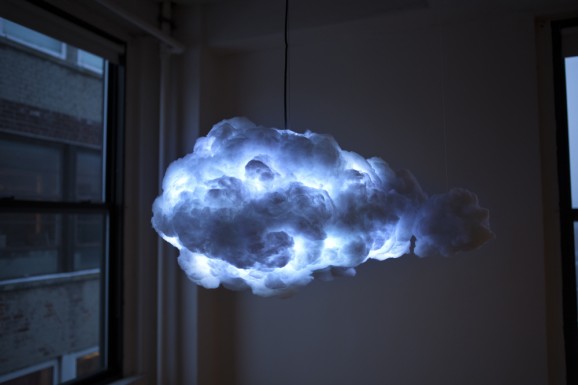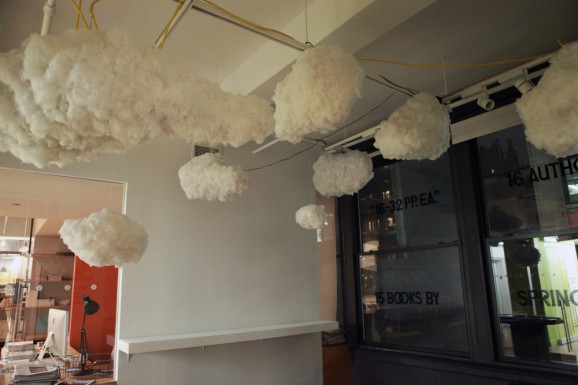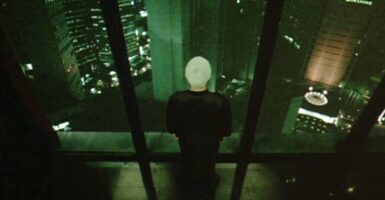Who’s Up For A Good Old Fashioned Thunderstorm In The Living Room?
This article is more than 2 years old
 I love a good thunderstorm. Of course, camping during a thunderstorm is generally not super awesome (next time I think I’ll try this treehouse tent), but there’s nothing quite like sitting in a cabin or on a covered porch listening to the rain and thunder, and appreciating being dry. Now, there’s a totally new and unique way to experience a thunderstorm — by triggering it, or at least the lightning and thunder part of it, from inside your own home via a hanging cloud.
I love a good thunderstorm. Of course, camping during a thunderstorm is generally not super awesome (next time I think I’ll try this treehouse tent), but there’s nothing quite like sitting in a cabin or on a covered porch listening to the rain and thunder, and appreciating being dry. Now, there’s a totally new and unique way to experience a thunderstorm — by triggering it, or at least the lightning and thunder part of it, from inside your own home via a hanging cloud.

Visual artist and designer Richard Clarkson combines art and technology in furniture and lighting work he does in studios based in New York City and New Zealand. One of his most recent and most impressive pieces is Cloud, a light shaped like a storm cloud that simulates the light and sound of a thunderstorm. Cloud has a light and sound system, but unlike a real storm, it’s interactive and controllable with a wireless remote. Its motion sensors respond to the presence of a human and respond with thunder and lightning, which run via an Arduino. And if the thunder gets a bit old, you can use a Bluetooth device to stream music to the cloud. I guess Garth Brooks is an obvious choice, but I think a storm cloud spewing electronica would be better.

The cloud can change its color, too, as well as its brightness, or even just double as a nightlight — or rather, “a new discourse for what a nightlight could be.” Clarkson has a few different varieties of clouds in his store. The smart cloud retails for $3,360, but if you only want it to serve as a lamp it’s $960. Satellite clouds can be added on for $240. The cloud itself is comprised of hypoallergenic fibers sewn into a sponge casing, which provides enough structure to contain the speakers and other components.
Clarkson has fully immersed himself in the realm of smart art, and believes that such projects, as well as the components and technology that makes such projects possible, are important both to the future of electronics, as well as the future of interactive art. To that end, he’s made the code for Cloud available for free, so other artists and tech geeks can adapt and improve upon it however they want — like to create hurricanes in the bathroom.












